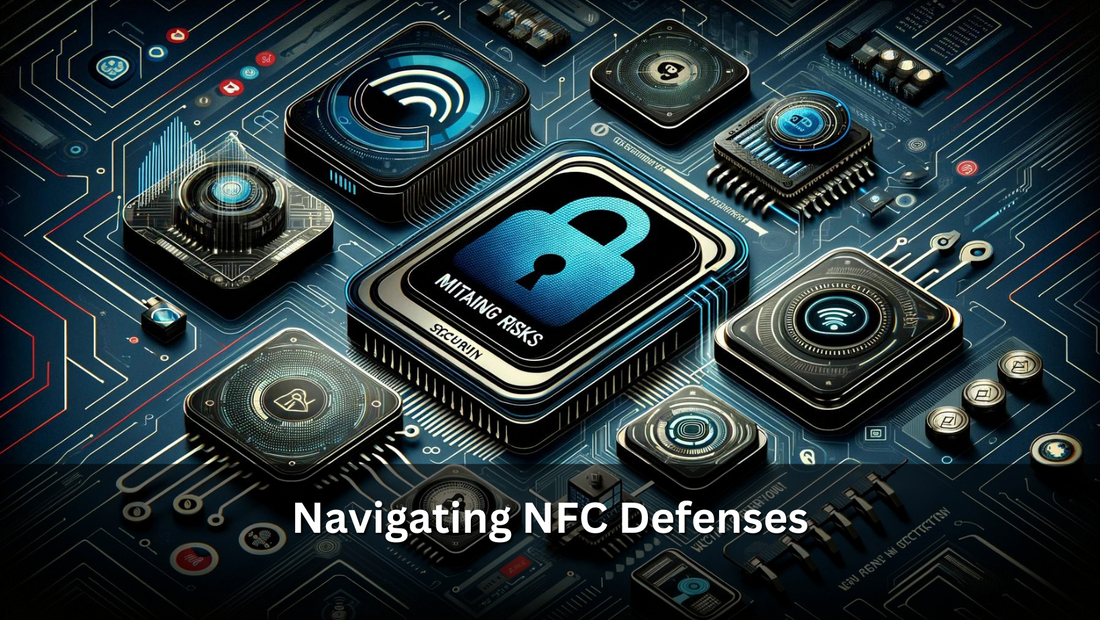Unpacking NFC Technology
NFC, or Near Field Communication, is a form of contactless communication between devices like smartphones or tablets. This technology allows users to wave their device over an NFC compatible terminal to send information without needing physical contact. Originating from RFID technology, NFC has evolved rapidly, being used for mobile payments, ticketing, and data sharing. Its integration into mobile devices has catapulted NFC into becoming a daily part of transactions and interactions, providing a quick and secure method to transfer information over short distances, typically 4cm or less, which is ideal for crowded, security-conscious environments.
NFC Mechanics Simplified
NFC operates through electromagnetic induction; when two NFC-capable devices are brought close together, a small electric current generates a magnetic field, creating a communication link. Each device has an NFC chip and antenna; when activated, one device generates a field that powers the passive chip in the other, allowing data exchange. This process enables tasks like contactless payments and data sharing with a simple tap or wave, without manual pairing or setup. NFC's ease of use stems from its ability to quickly establish a connection, communicate securely, and disconnect promptly once the interaction is complete.
NFC: Boons and Benefits
NFC technology has revolutionized the way we interact with the world around us. Its foremost advantage is the convenience it affords; transactions are completed with a simple tap, streamlining processes that once required multiple steps. This ease of use extends to various applications, from quick payments and fast transit check-ins to effortless information sharing between devices.
The speed of NFC transactions is unmatched, with data being transferred almost instantaneously. This efficiency is a boon in fast-paced environments where time-saving is crucial. Furthermore, NFC supports a wide range of services and can be integrated into multiple devices, enhancing the user experience with smart locks, ticketing portals, and personal device communication.
Additionally, the security protocols of NFC, which include encryption and secure channels, add a layer of protection to sensitive information, making it a trusted platform for digital wallets and access control. The versatility and user-friendly nature of NFC firmly establish it as a beneficial technology in today's digital landscape.
Challenges Facing NFC
While NFC technology has streamlined many aspects of digital communication and transactions, it does come with its set of challenges. One of the primary concerns is range limitation; NFC only operates effectively over short distances, which while beneficial for security, can be a limitation for certain uses. Additionally, compatibility can be an issue, as older devices may not support NFC, leading to a digital divide.
Another challenge is the potential for data theft through unauthorized scanning, known as eavesdropping, which is possible if an NFC transaction is intercepted. Moreover, because NFC simplifies transactions to a tap or wave, there's a risk of accidental payments or data exchange if a device comes into close proximity with a reader unintentionally.
Lastly, there are the challenges of security vulnerabilities such as cloning and relay attacks, where malicious actors can exploit NFC communication to commit fraud. These challenges necessitate robust security solutions to ensure the continued safe use of NFC technology.
Assessing NFC's Security Posture
NFC's security is built on short-range connectivity, which inherently limits unauthorized access simply due to proximity requirements. Additionally, NFC transactions typically involve encryption and secure channels to protect data integrity. However, this doesn’t make NFC impervious to risks. Vulnerabilities can arise from physical theft of NFC-enabled devices or from sophisticated cyber threats like eavesdropping or data manipulation during transmission. While NFC chips often have built-in security protocols, the devices they interact with may not always be secure, leading to potential breaches. Thus, while NFC has strong security foundations, vigilance and additional protective measures are crucial to safeguard against evolving cyber threats.
Exploring NFC Security Risks
The convenience of NFC technology also introduces specific security risks that must be navigated carefully. One of the most common threats is data tampering, where an attacker modifies the information being transmitted via NFC. This can lead to fraud, especially in transactions where payment or personal details are involved.
Eavesdropping is another risk, where unauthorized individuals intercept NFC communications to steal sensitive data. This can occur during the data transmission process, which, despite the short range of NFC, can be vulnerable to sophisticated receiving equipment.
Phone malware is a significant risk, particularly for NFC-enabled devices. Malicious apps can access NFC functionalities to transfer data without the user's knowledge. Similarly, relay attacks present a threat where an attacker uses an NFC device to relay messages between the victim's NFC device and the reader, effectively conducting transactions on behalf of the unsuspecting user.
Moreover, cloning and social engineering attacks exploit NFC's ease of use, where an attacker can replicate an NFC tag or trick users into tapping their devices on a corrupted NFC tag or reader, leading to potential security breaches.
For a deeper understanding of these NFC risks, readers can refer to the in-depth analysis by NordVPN on the topic of NFC security.
Real-World NFC Security Breaches
In recent years, NFC security breaches have made headlines, including instances where contactless payment data was intercepted and cloned onto other cards, allowing unauthorized transactions. There have also been reports of NFC-enabled smartphones being hacked to make payments or access secure facilities, underscoring the need for stringent security protocols.
Secure NFC Practices
To safely use NFC, it's essential to keep your devices updated with the latest security patches to guard against vulnerabilities. Only enable NFC when needed and disable it when not in use to minimize exposure. Be cautious with NFC tags; avoid tapping unknown or suspicious tags. Utilize secure elements or trusted execution environments in your device for sensitive operations. Finally, consider using NFC with additional authentication methods, like biometrics or PINs, to enhance security for transactions and data exchanges.
Conclusion
As NFC technology continues to gain popularity for its convenience and versatility, advancing security measures becomes paramount. Strengthening encryption, improving authentication processes, and raising public awareness about potential risks are critical steps. By prioritizing security, we can ensure that NFC remains a trusted tool for seamless transactions and interactions in our increasingly digital world.











